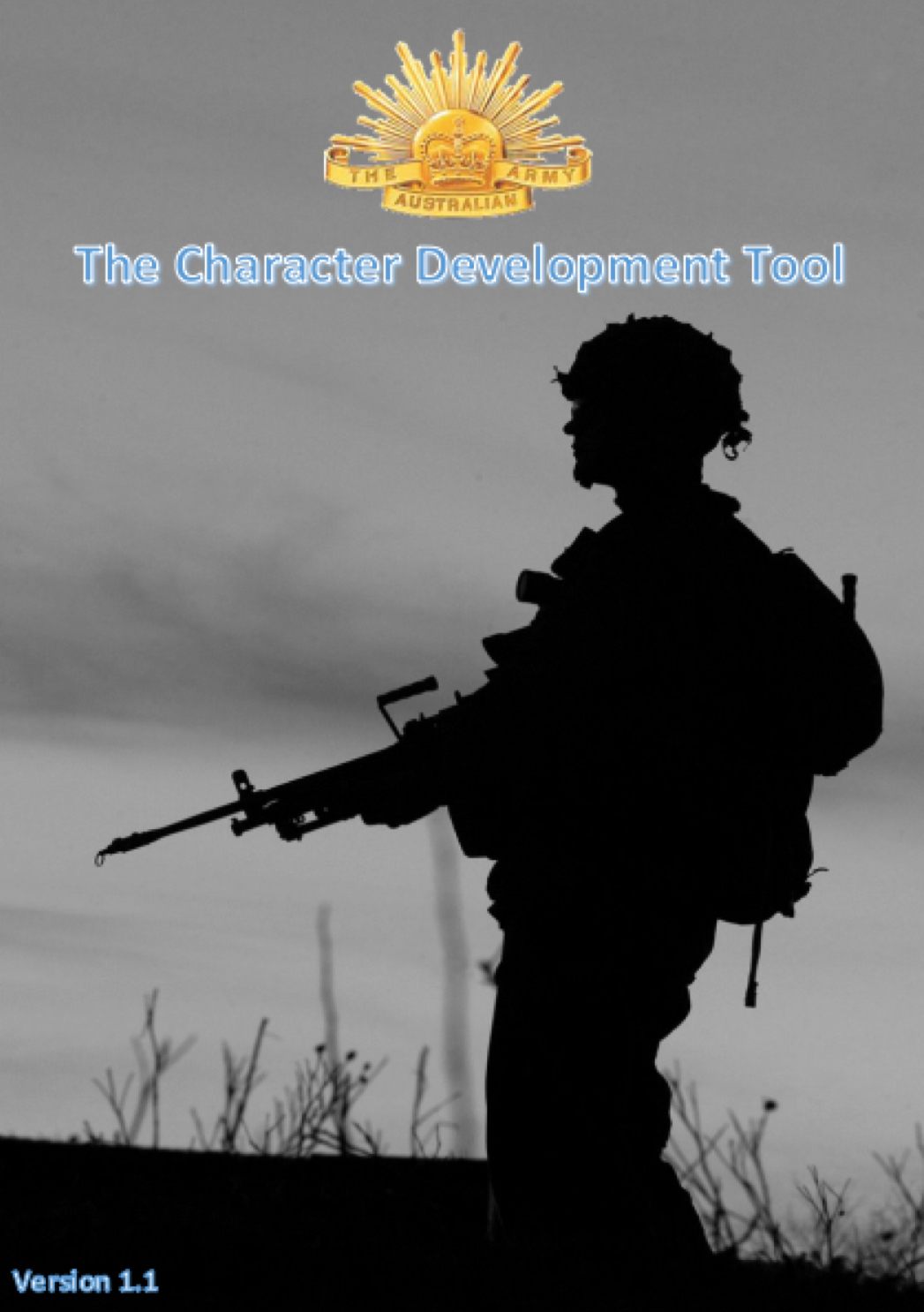
The Australian Army (and ADF more broadly) is not developing individual character in a way that is objective, tangible or measurable. The reason is not due to a lack of trying, but rather an unfortunate relationship that we as an organisation have with the concept of “character”. We as military professionals know how good character looks. We can sense it. We know what it feels like. Though if you were to ask ten people currently serving what is their definition of good character, they would give you ten completely different answers. Far from a negative representation of the organisation; it is rather an example of a team that has an intangible relationship with an important concept that is open to individual interpretation.
Active development of character goes beyond the application of the Army, service or ADF values. To be “active”, it must be tangible. To be tangible, it must be objective. And to be objective, it must be measurable.
I have an idea to change our relationship with character. It is a tool. A tool that can be used within the ADF to “actively” develop individual character. In the barracks, in the field and at home. In a way that is tangible, objective and measurable. It is cost effective, time scalable and adaptable to the target audience. Though it begins by first changing our relationship with character and benchmarking our definition of it.
I propose that the following definition of character be considered for the organisation:
Character is the pre-dispositions of a person combined with aspects of their personality forged through experience and education personified in their adaptational reactions to their environment and their ability to think, judge and decide within.
This definition is a hybrid of sorts. It is a recognition that character is unmalleable – something ingrained in the individual through their upbringing. Though it is also malleable – what the individual learns and experiences. But what makes this definition objective, tangible and measurable is the outcome of character – the ability to react to an environment and within this, to think, judge and decide. “Act” is purposefully left off this definition as to separate the concept of character as a complicated process that leads to an action that is measurable by competence. Thus, one’s character is an internal struggle that ends at “act”, but the action is inherently linked to the foundation from which it came – the character of the person. Thus, to better the “act”, or competence, one must develop the character, for the reasons stated within this definition.
If we accept this definition as a benchmark across the organisation, then my idea is a tool which I have called the Character Development Tool. The best way to describe it is as an After-Action Review for one’s character. It is a booklet (in the future it could be an on-line tool) that guides an individual through a self-reflective process that forces them to analyse their character in ways they may never have before. It assists in highlighting their strengths and weaknesses and also in setting character related goals for the future. It is compatible (and recommended) for 360-degree input from peers, supervisors and/or subordinates and can be completed in private and/or in a one-on-one counselling/mentoring session. It follows three steps:
Step 1 – Character Awareness Graph (CAG). Using the CAG and Character Items (CI), the individual assesses their character and constructs a graph for self-reflection and analysis. If possible, they then seek additional CAGs to overlap their own assessment and find consistencies and inconsistences with their own and other’s assessments of their character.

Step 2 – Analysis and self-reflection. With the data now generated, the individual is guided through an analytical process which has been inspired by the “filter” model of character development from doctrine. Through this, they highlight their strengths and weaknesses, either confirming or questioning the perception of others in comparison to their own. Again, this is either an individual experience or something that can be lead and guided as the situation demands.

Step 3 – Goal setting. Based on the previous steps, the individual is then guided through a simple goal setting format to turn their analysis and awareness into tangible steps inclusive of a timeline for execution.

The above-described process could be used for the period of an operational deployment, or after completing an obstacle course. It can also be implemented by the individual or with the input of dozens of others. Importantly, it can be kept private or as part of a commander’s mentoring session. Its scalability in time and implementation makes it a cheap and flexible tool that can be used at anytime, anywhere.
About the author
Richard Thapthimthong is an Infantry officer currently at ACSC(J). His research into Character Development is available at The Cove – Break In.

